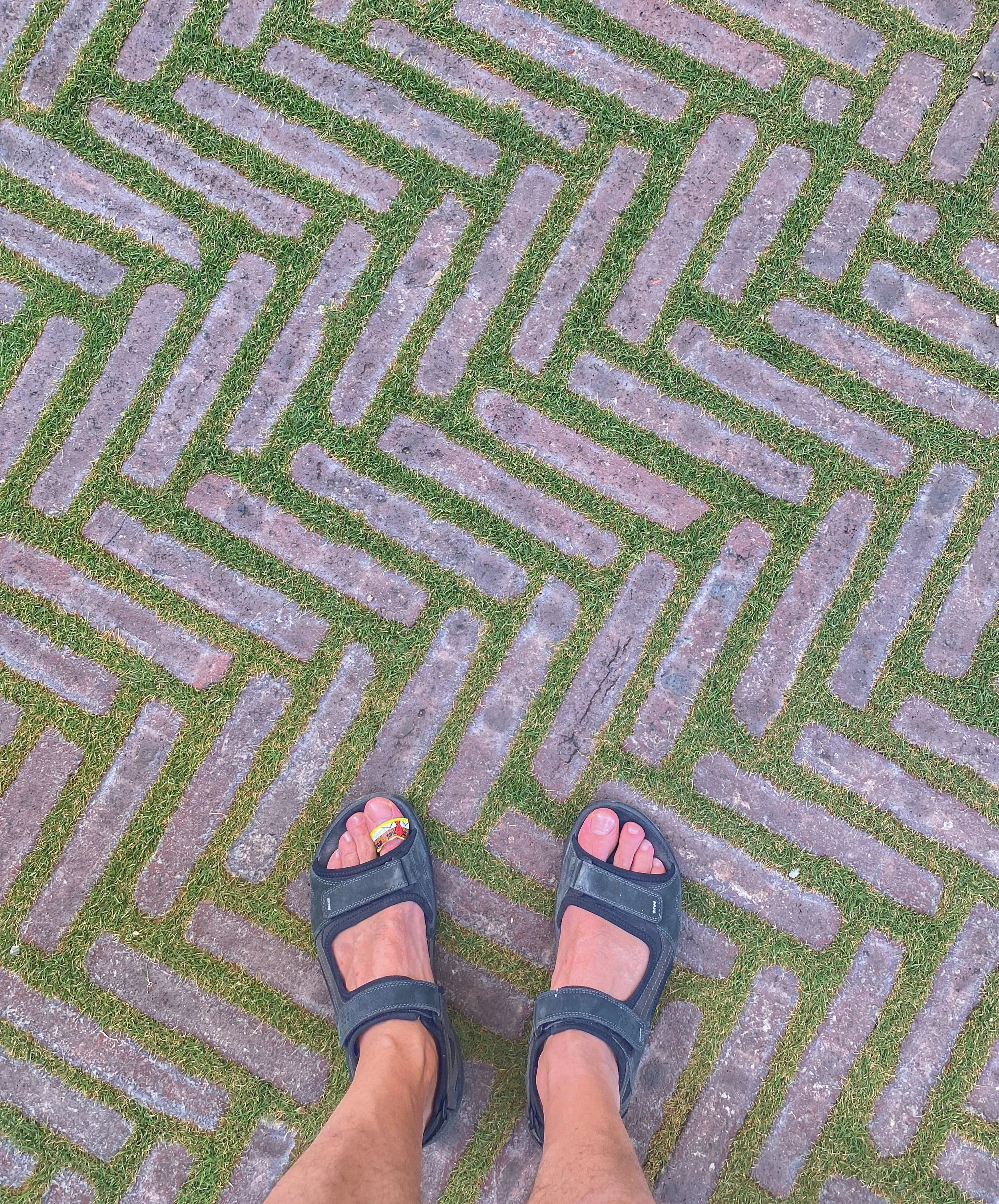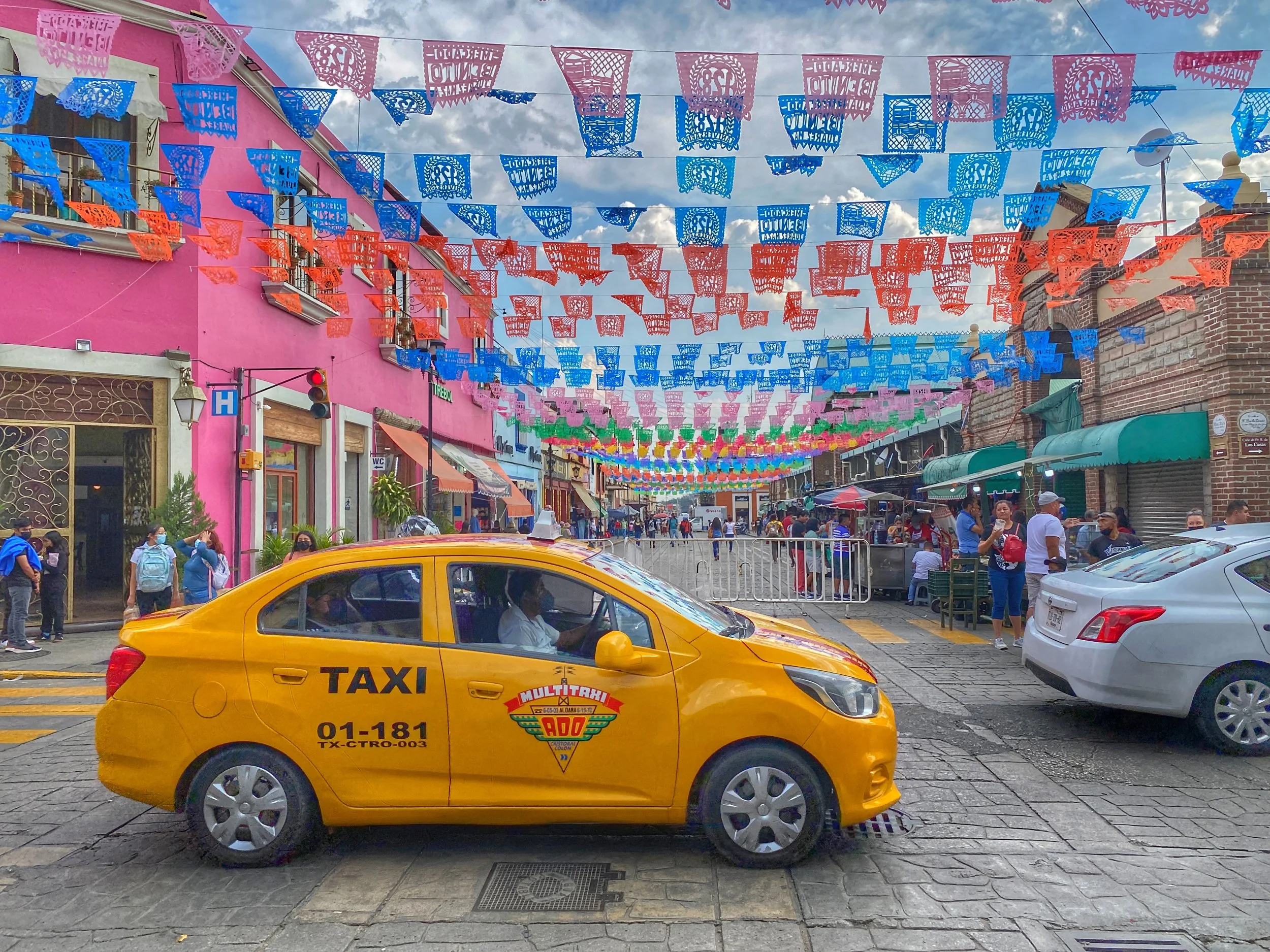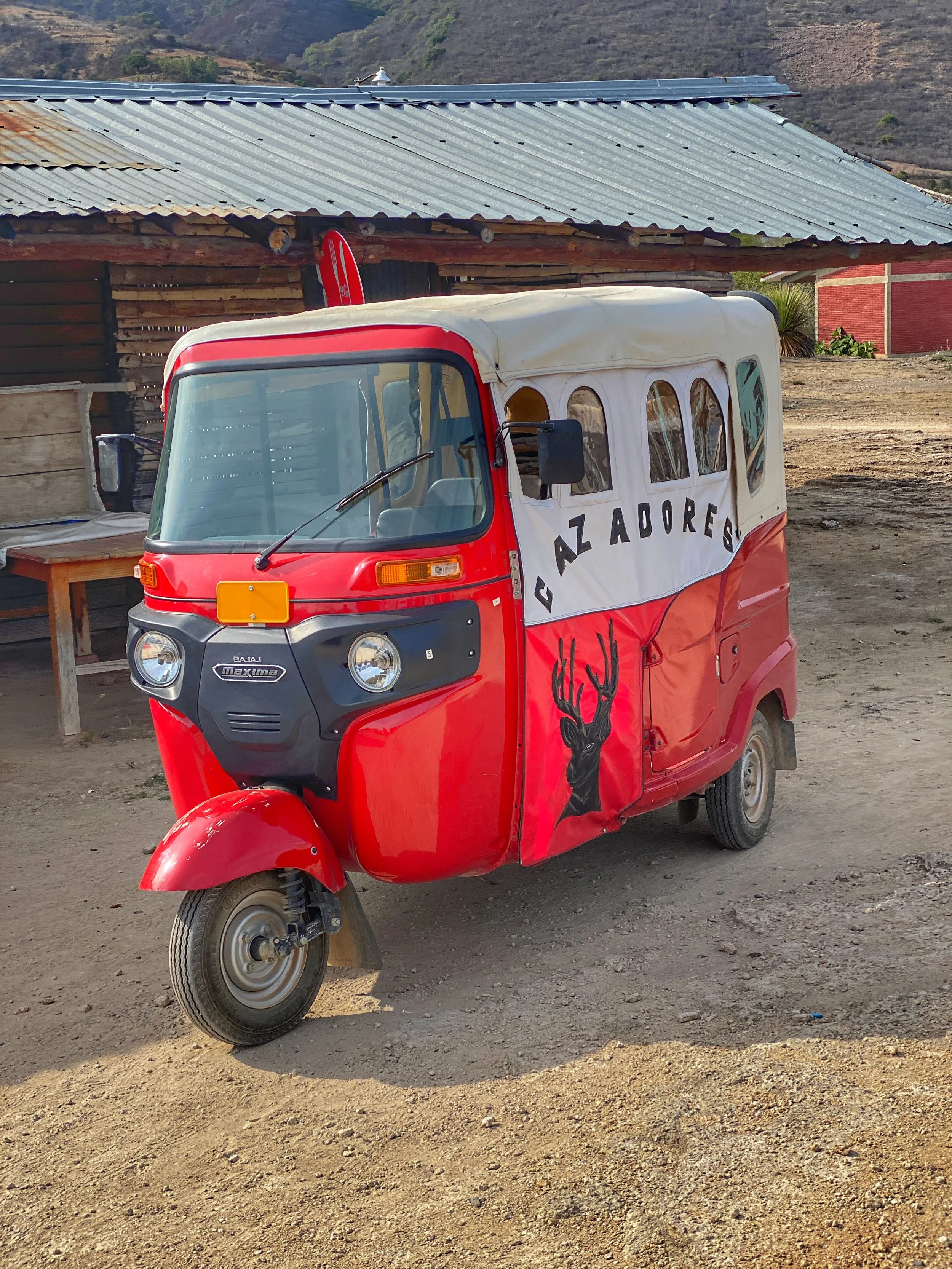Navigating colectivos, taxis, buses and mototaxis — and why you can’t get an Uber in Oaxaca, Mexico.
You’ll have plenty of options to get around Oaxaca — many of which are ridiculously affordable.
If you’re staying in Centro in Oaxaca (and you most likely are), most sites you want to see will be a five-to-15-minute walk away — aside from the day trips to artisan villages, mezcalerías, the archeological sites of Monte Albán and Mitla, and the natural splendor of Hierve el Agua.
Be warned, though. We relied too heavily on Google Maps as we set out to a destination, and after 10 minutes realized we were literally walking in circles. There’s definitely something funky with GPS in Oaxaca — it doesn’t update or pinpoint locations well enough to rely upon it.
“There’s definitely something funky with GPS in Oaxaca — it doesn’t update or pinpoint locations well enough to rely upon it. ”
Bring comfortable shoes — you might be walking in circles in Oaxaca’s Centro.
I found the best thing to do is plot out your path before heading out. You can usually get from one spot to another in Centro by traveling down a maximum of three or four streets.
Even then, smooth navigation is by no means guaranteed. A large part of why it’s so hard to get your bearings in Oaxaca is because the buildings are all built right up to the sidewalk and form a veritable corridor. Walking along them gives you no line of sight to landmarks to orient yourself. I’m sure this was done to keep the streets as cool as possible during the blazing heat — but it does make visitors feel a bit like they’re in a maze.
The other confusing aspect is that streets will change names after a few blocks. We were looking for Porfirio Díaz, but went well beyond it because we didn’t know that 20 de Noviembre became Porfirio Díaz just one block up. Similarly, 5 de Mayo suddenly turns into Armenta y López. This will happen all the time, so make sure you have the right name for the area you want to go to.
Arriving in Oaxaca
Duke typically likes to arrange transport from the airport through our hotel. You’ll pay more, but it’s reassuring knowing that you have someone waiting there when you arrive, ready to ensure you make it safely to your lodgings.
In Oaxaca, though, this isn’t necessary. Once you collect your baggage, head into the next room and find the transport kiosk. There’s a set fee for the trip into Centro, and it’s very affordable — ours came to about $10. Try to get to the kiosk as soon as possible, as you’ll be sharing the ride in a colectivo van, and this way you can score the best seats.
Cabs are plentiful and cheap in Oaxaca. Especially if you’re out late, play it safe and hop in a taxi to get home.
Driving Around Oaxaca
When it came to vehicular transport for day trips and around town, I asked our friend, Kevin, who lives in Oaxaca, how we should get around. The following sections are his response:
The old-fashioned way. A cab! That is correct. Uber was not allowed here, thanks to the powerful local unions. (Though we do have food delivery from Rappi.)
Many tourists will hire a cab for the entire day since getting cabs out of artisan villages and sites like Monte Albán can be rough.
TIP: When the time comes, you will want to join the Expats Oaxaca Facebook group and you can ask for recommendations to hire a driver for the day. It’s very inexpensive compared to the U.S. You’ll be flooded with responses.
A colectivo pulls up in front of our Airbnb.
What’s a Colectivo?
Another way that’s very cheap, and the method I use, are called colectivos. You’re sharing a janky-ass cab with as many people that can fit in it. Two people in the one front seat is common. Three in the back. I’ve had four in the back before, but that’s not common.
I take them to far-off pueblos (villages) and it costs 20 pesos on average — basically $1 U.S.
You can’t pick up a colectivo at your hotel or in Centro. You need to walk to el Mercado de Abastos (the Food Market), where they congregate. There are sections to grab these for each pueblo.
The market to get it is a 15-minute walk from Centro. But being White and walking through the market and navigating that will be tricky, as you will not want your phone out and in your hand while Google helps you navigate it. Otherwise it’s very safe. I love that market — best in Oaxaca and less touristy because they want upscale experiences in Mexico and not local slices of real life here.
Getting colectivos was definitely easier for me because I had my boyfriend navigate that shit so many times I can now do it myself. If you speak Spanish, you’ll be fine.
Returning is very simple, as they are constantly running all day to and from Oaxaca.
We didn’t take any, but buses are an option for getting around.
Buses?
Another option are the buses. But again, don’t expect a bus like it is in the U.S. It’s really janky, loud and quite an Old World experience. I have used them often to travel to pueblos as well.
And Renting a Car?
With insurance, expect to pay about $65-$90 U.S. for a day.
Cute little mototaxis are popular ways to get around the villages outside of the city of Oaxaca.
What About in the Villages?
You will take a tuk-tuk (called mototaxis here). It’s a fantastic way to maneuver through pueblos, reach another pueblo nearby or get a ride out of a pueblo to the main road where you can grab your colectivo, etc. Super cheap.
Usually a colectivo will take you to one spot within the pueblo, and then you walk or take a tuk-tuk if you want. Normally, locals take tuk-tuks because they want to get out of the center of the pueblo to their homes. So where a colectivo drops you is typically the area you want to be in anyway.
The mototaxis in this part of Mexico reminded us of the tuk-tuks we rode in Southeast Asia.
When Duke and I cabbed around town, we tended to pay about 50-80 pesos.
Don’t be surprised if the taxi doesn’t have seatbelts — we found that to be the norm. (In fact, the drivers have them but they dangle there, unused for some reason.)
You’ll find Oaxaca to be a very walkable city. And when you take those days trips — and you really must, as the artisan villages are what make this area so appealing — you have a variety of options. –Wally




































